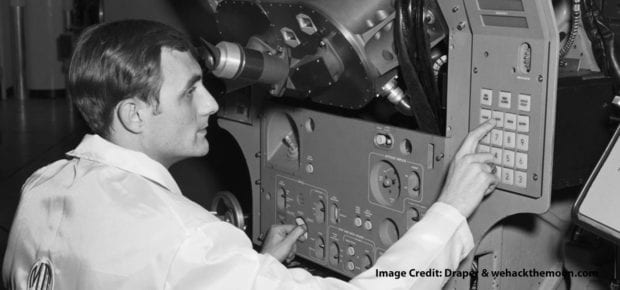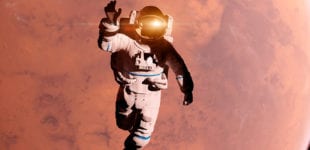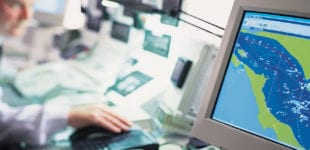July 11, 2019
50 years ago, Apollo 11 landed on the moon.
IEEE Life Fellow George Schmidt helped get it there – he worked on the equipment used in the Apollo’s test lab, and monitored the guidance system in Cape Kennedy before every Apollo launch. His 46-year career was spent at the MIT Instrumentation Laboratory and the Draper Laboratory, specializing in guidance navigation control and avionics.
Putting a human on the moon was something that nobody had ever done before. And that put a lot of pressure on the engineers to make sure nothing went wrong. Of course, this was before personal computers and robust simulations, so hardware had to get built in order to be tested.
Thinking back on the technology and the experience, Schmidt feels there were many things that made Apollo successful, which are still applicable to engineers today. He shared with IEEE Transmitter his two biggest learnings. First, he says, “There’s an attitude that goes with being a good engineer, and that is: no unexplained failures. If you’re in a lab testing a piece of hardware and the test doesn’t go the right way, don’t hit the restart button. Stop to figure out what caused it.”
Engineering today is quite different than it was back then. Labs have much greater computing power, integrated circuits and a host of other technologies. Simulation is now a standard part of the design process.
His second biggest takeaway – “You should ask ‘what if?’ If you observe something in the laboratory that isn’t quite right, think about the potential impact; we had to think ‘what if it had happened in a real mission?’ We found a lot of things that, had they happened, would’ve been a disaster.”
So what excites Schmidt the most about the newest wave of space technologies?
“Way back when, it used to be a straightforward process – you launched the vehicles into space, they flew around in space for a while, then the exciting part was always re-entry because of the blackout period,” Schmidt recalls. While reentering the Earth’s atmosphere behind a heat shield, astronauts would lose communication with mission control for several minutes. “When radio communications could be re-established, there would be a big cheer in the control room,” Schmidt says.
“We’ve gone from that kind of scenario to one where you look at SpaceX and Falcon 9 and see the most amazing guidance, navigation and control system for spacecraft and rockets that we have.
“Falcon 9 has the ability to be launched and then the boosters, when they separate, are guided back by a very clever guidance and navigation control system to land on a barge in the ocean. They have reusable boosters now that they say can be used 100 times – the solid boosters that fell off the Shuttle ended up being wrecked and not being reusable again.”






 Liquid Infrastructure: Our Planet's Most Precious Resource
Liquid Infrastructure: Our Planet's Most Precious Resource The Impact of Technology in 2025
The Impact of Technology in 2025 Quantum and AI: Safeguards or Threats to Cybersecurity?
Quantum and AI: Safeguards or Threats to Cybersecurity? Why AI Can't Live Without Us
Why AI Can't Live Without Us Bits, Bytes, Buildings and Bridges: Digital-Driven Infrastructure
Bits, Bytes, Buildings and Bridges: Digital-Driven Infrastructure Impact of Technology in 2024
Impact of Technology in 2024 Emerging AI Cybersecurity Challenges and Solutions
Emerging AI Cybersecurity Challenges and Solutions The Skies are Unlimited
The Skies are Unlimited Smart Cities 2030: How Tech is Reshaping Urbanscapes
Smart Cities 2030: How Tech is Reshaping Urbanscapes Impact of Technology 2023
Impact of Technology 2023 Cybersecurity for Life-Changing Innovations
Cybersecurity for Life-Changing Innovations Smarter Wearables Healthier Life
Smarter Wearables Healthier Life Infrastructure In Motion
Infrastructure In Motion The Impact of Tech in 2022 and Beyond
The Impact of Tech in 2022 and Beyond Cybersecurity, Technology and Protecting Our World
Cybersecurity, Technology and Protecting Our World How Technology Helps us Understand Our Health and Wellness
How Technology Helps us Understand Our Health and Wellness The Resilience of Humanity
The Resilience of Humanity Harnessing and Sustaining our Natural Resources
Harnessing and Sustaining our Natural Resources Creating Healthy Spaces Through Technology
Creating Healthy Spaces Through Technology Exceptional Infrastructure Challenges, Technology and Humanity
Exceptional Infrastructure Challenges, Technology and Humanity The Global Impact of IEEE's 802 Standards
The Global Impact of IEEE's 802 Standards Scenes of our Cyber Lives: The Security Threats and Technology Solutions Protecting Us
Scenes of our Cyber Lives: The Security Threats and Technology Solutions Protecting Us How Millennial Parents are Embracing Health and Wellness Technologies for Their Generation Alpha Kids
How Millennial Parents are Embracing Health and Wellness Technologies for Their Generation Alpha Kids Space Exploration, Technology and Our Lives
Space Exploration, Technology and Our Lives Global Innovation and the Environment
Global Innovation and the Environment How Technology, Privacy and Security are Changing Each Other (And Us)
How Technology, Privacy and Security are Changing Each Other (And Us) Find us in booth 31506, LVCC South Hall 3 and experience the Technology Moon Walk
Find us in booth 31506, LVCC South Hall 3 and experience the Technology Moon Walk Virtual and Mixed Reality
Virtual and Mixed Reality How Robots are Improving our Health
How Robots are Improving our Health IEEE Experts and the Robots They are Teaching
IEEE Experts and the Robots They are Teaching See how millennial parents around the world see AI impacting the lives of their tech-infused offspring
See how millennial parents around the world see AI impacting the lives of their tech-infused offspring Take the journey from farm to table and learn how IoT will help us reach the rising demand for food production
Take the journey from farm to table and learn how IoT will help us reach the rising demand for food production Watch technical experts discuss the latest cyber threats
Watch technical experts discuss the latest cyber threats Explore how researchers, teachers, explorers, healthcare and medical professionals use immersive technologies
Explore how researchers, teachers, explorers, healthcare and medical professionals use immersive technologies Follow the timeline to see how Generation AI will be impacted by technology
Follow the timeline to see how Generation AI will be impacted by technology Learn how your IoT data can be used by experiencing a day in a connected life
Learn how your IoT data can be used by experiencing a day in a connected life Listen to technical experts discuss the biggest security threats today
Listen to technical experts discuss the biggest security threats today See how tech has influenced and evolved with the Games
See how tech has influenced and evolved with the Games Enter our virtual home to explore the IoT (Internet of Things) technologies
Enter our virtual home to explore the IoT (Internet of Things) technologies Explore an interactive map showcasing exciting innovations in robotics
Explore an interactive map showcasing exciting innovations in robotics Interactively explore A.I. in recent Hollywood movies
Interactively explore A.I. in recent Hollywood movies Get immersed in technologies that will improve patients' lives
Get immersed in technologies that will improve patients' lives